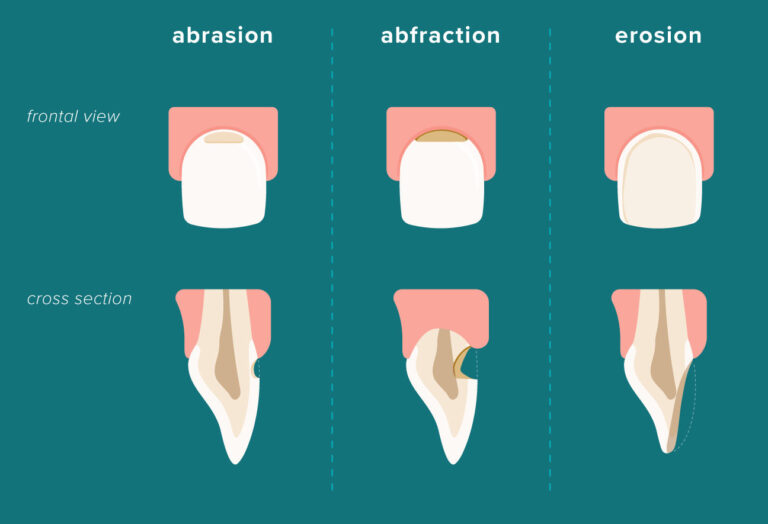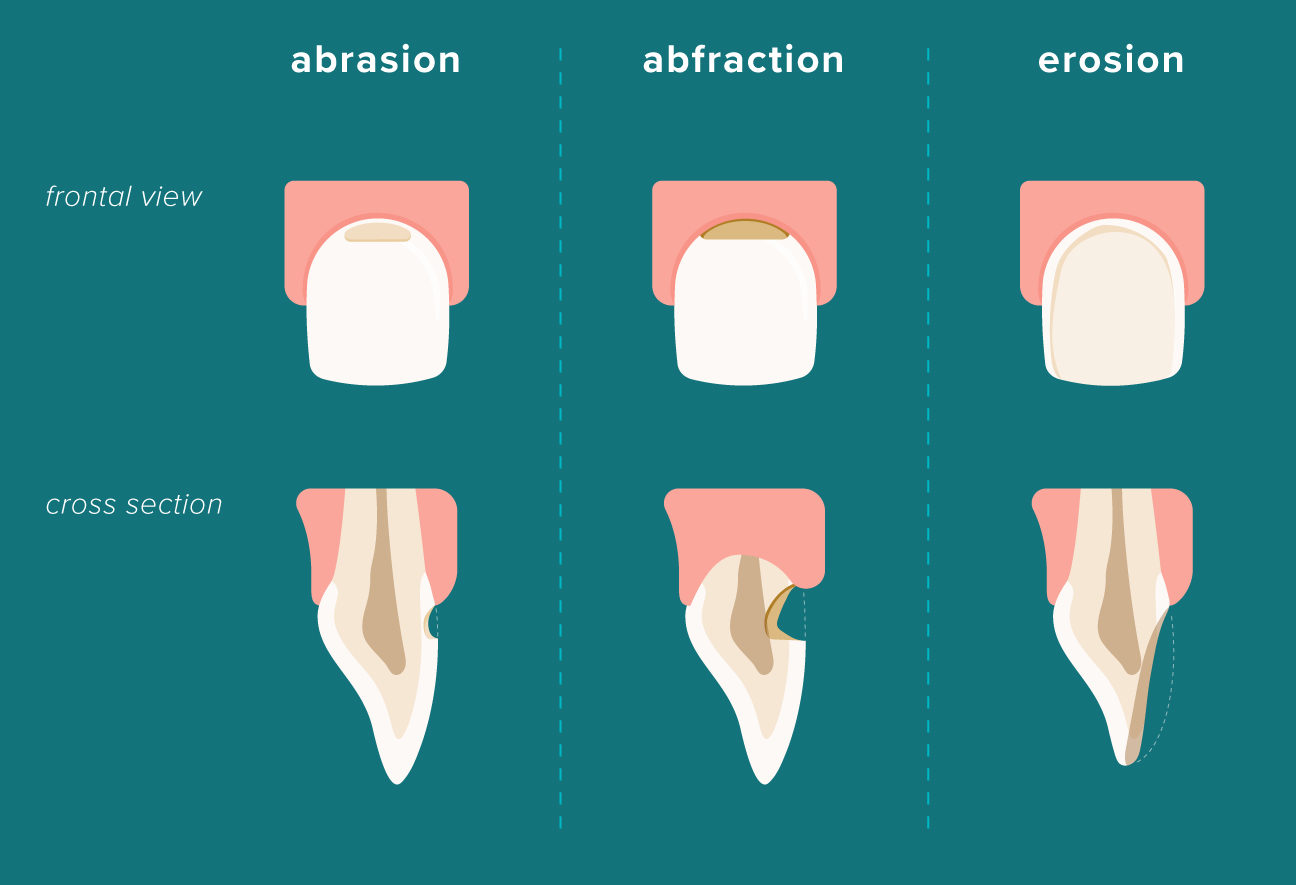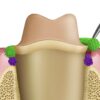Types of tooth wear
Attrition, abrasion, corrosion and abfraction revisited: A new perspective on tooth surface lesions
Grippo et al 2004

The article presents a schema of the pathodynamic mechanisms in the formation of tooth surface lesions—three basic physical and chemical mechanisms, their interactions and their dental manifestations.
Definitions of Lesions:
Attrition:
Tooth-to-tooth friction. Can have proximal attrition.
Abrasion:
Wear due to friction between a tooth and an exogenous agent. Friction from food is termed “masticatory abrasion”.
Abrasion could occur due to tooth brushing, chewing tobacco, or any other habits.
Corrosion:
Tooth surface loss caused by chemical or electrochemical action.
Endogenous or exogenous source of corrosion can be present.
Endogenous:
Bulimia, perimolysis– can see corrosion of palatal surfaces of max. anterior teeth.GERD is slower and more prolonged process- corrosion of posterior occlusal and anterior palatal surfaces, cupped areas exposing dentin.
Crevicular fluid can be corrosive according to Bodecker; Biocorrosion (caries)- loss of tooth structure by corrodents from bacteria.
Exogenous:
Citrate ion in acidic drinks are destructive because of its binding or chelating action on calcium.
According to Lussi, corrosive value is not exclusively dependent on its pH but strongly influenced by its buffering capacity, the chelation properties of the acid and by the frequency and duration of ingestion.
Abfraction:
Loss of tooth substance in areas of stress concentration.
Occurs most common in cervical area, where flexure may lead to breaking away of thin layer of enamel rods, as well as microfracture of cementum and dentin.
Appear in crescent form in the cervical part of the tooth due to occlusal loading.
Combined mechanisms of tooth wear
Attrition-abfraction– Joint action of stress and friction when teeth are in tooth-to-tooth contact (bruxism, clenching)
Abrasion-abfraction–Loss of tooth structure from friction from an external material on an area where stress concentration develops due to loading forces. (tooth brushing exacerbates abfraction to produce wedge-shaped lesions)
Corrosion-abfraction– Loss of tooth substance due to chemical corrodent on area of stress concentration.
Static stress corrosion:
Demineralization that occurs around orthodontic appliances (sustained stress) in presence of corrodent.
Cyclic (fatigue) stress corrosion:
Occur during mastication in patients that engage in fruit mulling or in patients that brux in presence of GERD or exogenous corrodent. Loaded teeth showed a loss of enamel 10 x greater than unloaded teeth according to Palamara et al.
Multifactorial Mechanisms
More than two mechanisms may be involved in tooth surface lesions. A corrosive cervical lesion could be exacerbated by toothbrushing abrasion and abfraction stress resulting from bruxism can become lesions of corrosive-abrasive-abfractive in nature.
Conclusions:
Proposed definitions will clarifydentistry’s understanding of carious and noncarious lesions. Pathodynamicschema presented can be a guide for the clinical situation to diagnose the complex etiology of tooth surface lesions.



